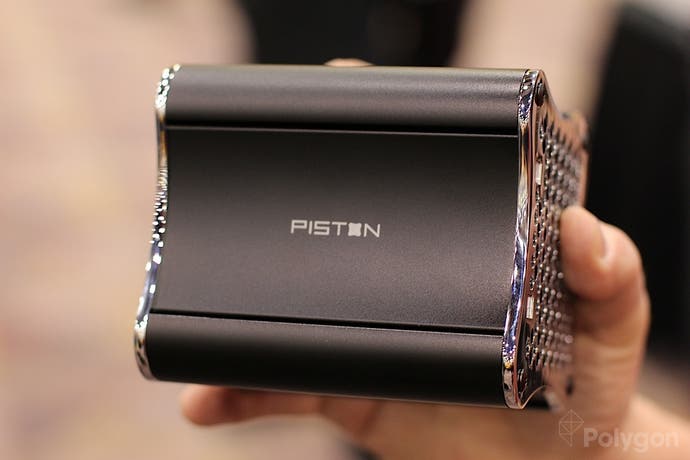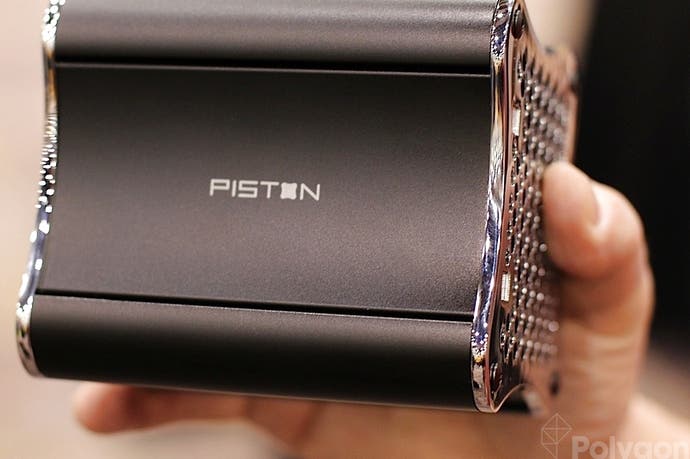Is this Xi3 computer called Piston Valve's Steam Box?
UPDATE: Digital Foundry weighs in.
UPDATE: Digital Foundry's Richard Leadbetter has offered his take on the Steam-powered Piston.
"Piston's form factor and specs strongly suggest that what we are seeing here is an implementation of AMD's 'Fusion' APU, which combines a quad-core CPU with an entry-level gaming graphics solution on one piece of silicon - we've covered the current-gen APUs out there - Trinity for laptops and Virgo for desktops. Trinity dukes it out with current-gen consoles from a performance perspective while Virgo is significantly better.
"Assuming a release some time in the future, Piston could feature a revised version of that chipset - and probably the laptop iteration considering the small power draw. The next-gen APUs are believed to contain considerable CPU refinements along with graphics based on AMD's more recent GCN architecture. Combine that with a stripped down Linux and a decent driver and we could have a cheap-to-produce box with decent - though not mind-blowing - performance. The big concern here would be the price - Xi3 make miniature computers with a premium price-point way beyond what you would expect to pay for a console."

Is this Valve's Steam Box? It's a computer codenamed Piston made by Xi3.
This development-stage computer was shown at the Consumer Electronics Show in Vegas. Piston is designed specifically to support Steam and its Big Picture mode for TVs. But Valve's role was described by Xi3 as only an investor in Xi3, nothing more. Were this the fabled Steam Box, wouldn't Valve be shouting about it?
Piston is modelled on and looks like Xi3's existing X7a computers, Xi3 told Polygon. What stands Piston apart other than its Steam integration isn't known.
Xi3 makes sexy cube PCs small enough to grasp easily with one hand. The clever part is that they're modular, the innards separated into three special card components that can be swapped easily. One component handles processor and memory; another display and power; and another I/O or special connectivity options.
This nifty design means Xi3 computers can be easily kept up to date, although you'll be restricted to components made for Xi3 machines.
Apparently Xi3 computers also use as little as one tenth the power of other similarly specced PCs.
The X7a system specs offer a glimpse at what performance to expect.
- A quad-core 64-bit, x86-based 32nm processor running at up to 3.2GHz (with 4MB of Level2 Cache)
- An integrated graphics processor (GPU) containing up to 384 programmable graphics cores (or shaders)
- 4GB-8GB of DDR3 RAM
- 64GB-1TB of internal solid-state SSD storage (with up to 12Gbps throughput speeds)
- Three display ports providing maximum resolution of 4096x2160 (including one DisplayPort v1.2 and * 2 Mini-DisplayPorts v1.2)
- Four eSATAp 3.0 ports
- Four USB 3.0 ports
- Four USB 2.0 ports
- 1Gb Ethernet port
- Three audio ports (1 input and 2 outputs: 1 copper and 1 optical)
Prices for an X7a will start at $1100 and they'll be available in February, according to a press release put out in September. They'll run Windows 8, Linux and Unix.
The Xi3 website is being squished at the moment.

